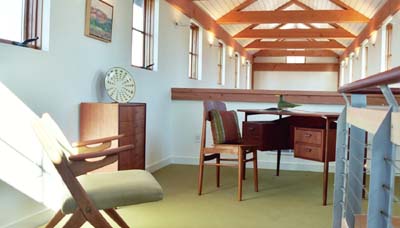What if there was an interior design style that personified what seems to be a growing awareness to care for our resources, to take time to smell the flowers and to nurture our close relationships ..
Less is more ..
Scandinavian interior design has kept this philosophy alive for many decades and it is this attitude that is becoming much more popular once again. A key element embodying these ideals is the view that “less is more“. To choose furnishings with regard to how each looks, functions and feels helps enhance the overall style of the room collectively. Without extra clutter, pieces can be seen, appreciated and bring a certain presence to the room.
Human-scale proportion ..
A unique quality personifying Scandinavian furnishings is that they are generally no larger than the intended purpose of the piece. This aspect resonates with their respect for nature and resources. An over-decorated room can be burdensome, as the eye does not get to rest; hence the body has more difficulty relaxing. Choosing only items that are meaningful, beautiful, and useful creates a blend of furnishings as unique as each individual. Pulling it together may require a keen eye, but using the principals of proportion, balance and simplicity can help one achieve the look.

Make the most of light ..
Another major factor of Scandinavian interior design is the desire to have as much reflectivity and natural light in the home as possible. Sunlight is so important for our health and mental attitude that by bringing it into our homes, we create a more cheerful atmosphere, recharging our senses.

Natural surfaces ..
Wooden floors are often left as light as possible and walls are decorated in soft shades of cream, off white or gray. Furniture is painted in soft reflective colors, or left in a natural wood tone.

Crisp and clear ..
Simple checks, stripes and gingham fabrics are indicative of the look and naive florals on light backgrounds are also popular. Colors tend to be clear in blues, reds and yellows. Window coverings are kept to a minimum, many times using traditional roller blinds and decorative swags to allow the light to come in without obstruction. Candlelight, mirrored sconces and crystal chandeliers are used to diffuse the light once the sun sets.

Well-built furnishings ..
Quality craftsmanship is another idealism of Scandinavian design. Although pieces are not elaborate with decoration, the way they are made is a hands-on process. Careful thought and planning is taken when creating a living space, and the furnishings places within it. Can an item be used for more than one purpose? Can the room be rearranged for different family events, festivities or seasons? Can pieces be easily used and maintained? With these thoughts in mind, the result is one of beautiful, user-friendly, well-proportioned furnishings built to last.

Nordic influence ..
Scandinavian design does however encompass several diverse styles, yet the looks intermingle with ease. The more rustic style includes rosmalning, darker colors and chunkier furniture. Often beds are built-in to keep the cold at bay and furnishings are dual purpose to save on space. Rooms are quite sparse, but made cozy with linens that are more ornate and used in a decorative fashion. This style has an affinity with cabin life and lends itself to a colder climate.
Swedish Gustavian
The refined style of the Gustavian period has an unpretentious elegance that suits a lake shore setting in a summer house style. Pieces are more delicate and lighter in color. Rooms are somewhat more formal, but never austere or uninviting. This is the style most associated to Carl Larrson.
Mid-century modern ..
The contemporary style has a cosmopolitan aire to it, befitting a city or more urban setting. Furniture is streamlined, often in natural wood tones. Bold fabrics and striking accessories complete this look. This style is also reffered to as Scandinavian Modern.
Scandinavian interior design beckons us to slow down, choose well and enjoy the simple pleasures of life. It integrates nature, color, simplicity and comfort whilst being at the leading edge of design. What aspects of this style are your favorite?





